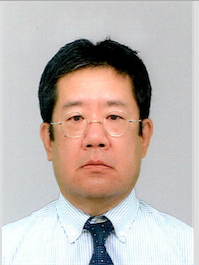Yuichi Hashimoto

Education
- 1984-1988 National Institute of Fitness and Sports in Kanoya
- 1988-1990 Graduate School of Health and Sports Sciences, Juntendo University
- 1990-1994 Graduate School of Medicine, Juntendo University
Work Experience
- April, 1994-March, 1995 Research Assistant at The University of Tokyo, School of Arts and Sciences
- April, 1995-September 1998 Research Fellow at Department of Exercise Biochemistry, National Institute of Fitness and Sports
- May, 1996-September, 1998 Department of Desk-top Publishing, Oita Area Recruitment Center, Co., Ltd.
- October, 1998-October, 2003 Instructor at Department of Pharmacology, Keio University
- November, 2003-March, 2008 Instructor at Donated Department of Cell Biology and Neuroscience, Keio University
- April, 2009-August, 2009 Instructor at Department of Pharmacology, Tokyo Medical University
- August, 2009-Present Assistant Professor at Department of Pharmacology, Tokyo Medical University
Selected Articles
-
Hashimoto Y, Kusakari S, Nawa M, Okamoto T, Toyama Y, and Matsuoka M.
Restoration of the reduced CLSP activity alleviates memory impairment in Alzheimer disease.
Transl. Psychiat. 2021; 11: 44
-
Hashimoto Y, Umahara T, Hanyu , Iwamoto, T and Matsuoka M
Calmodulin-like skin protein is downregulated in human cerebrospinal fluids of Alzheimer's disease patients with apolipoprotein E4; a pilot study using postmortem samples.
Neurol. Res. 2017; 39: 767-772.
-
Hashimoto Y, Toyama Y, Kusakari S, Nawa M, and Matsuoka M
An Alzheimer disease-linked rare mutation potentiates netrin receptor uncoordinated-5C-induced signaling that merges with amyloid β precursor protein signaling.
J. Biol. Chem. 2016; 291: 12282-12293.
-
Hashimoto Y, and Matsuoka M
A mutation protective against Alzheimer's disease renders amyloid β precursor protein incapable of mediating neurotoxicity.
J. Neurochem. 2014; 130: 291-300.
-
Takeshita Y, Hashimoto Y (First author equivalent), Nawa M, Uchino H, and Matsuoka M
SH3-binding protein 5 mediates the neuroprotective effect of the secreted bioactive peptide humanin by inhibiting c-Jun NH2-terminal kinase.
J. Biol. Chem. 2013; 288: 24691-146704.
-
Hashimoto Y, Nawa M, Kurita M, Tokizawa M, Iwamatsu A, and Matsuoka M
Secreted calmodulin-like skin protein inhibits neuronal death in cell-based Alzheimer's disease models via the heterotrimeric Humanin receptor.
Cell Death Dis. 2013; 4: e555.
-
Hashimoto Y, Kurita M, Aiso S, Nishimoto I, and Matsuoka M
Humanin inhibits neuronal cell death by interacting with a cytokine receptor complex or complexes involving CNTF receptor /WSX-1/gp130
Mol. Biol. Cell 2009; 20: 2864-2873.
-
Hashimoto Y, Chiba T, Yamada M, Nawa M, Kita Y, Kanekura K, Suzuki H, Terashita K, Aiso S, Nishimoto I, and Matsuoka M
Transforming growth factor β2 is a neuronal cell death-inducing ligand for amyloid-β precursor protein.
Mol. Cell. Biol. 2005; 25: 9304-9317
-
Ikonen M, Liu B, Hashimoto Y, Ma L, Lee K-W, Niikura T, Nishimoto I, Cohen P
The Alzheimer's survival peptide Humanin binds insulin-like growth factor binding protein-3 and modulates its proapoptotic functions.
Proc. Natl. Acad. Sci. USA. 2003; 100: 13042-13047
-
Hashimoto Y, Niikura T, Ito Y, Sudo H, Hata M, Arakawa E, Abe Y, Kita Y, Nishimoto I
Detailed characterization of neuroprotection by a rescue factor Humanin against various Alzheimer's disease-relevant insults.
J. Neurosci. 2001; 21: 9235-9245
-
Hashimoto Y, Niikura T, Tajima H, Yasukawa T, Sudo H, Ito Y, Kita Y, Kawasumi M, Kouyama K, Doyu M, Sobue G, Koide T, Tsuji S, Lang J, Kurokawa K, Nishimoto I
A rescue factor abolishing neuronal cell death by a wide spectrum of familial Alzheimer's disease genes and Aβ.
Proc. Natl. Acad. Sci. USA. 2001; 98: 6336-6341





